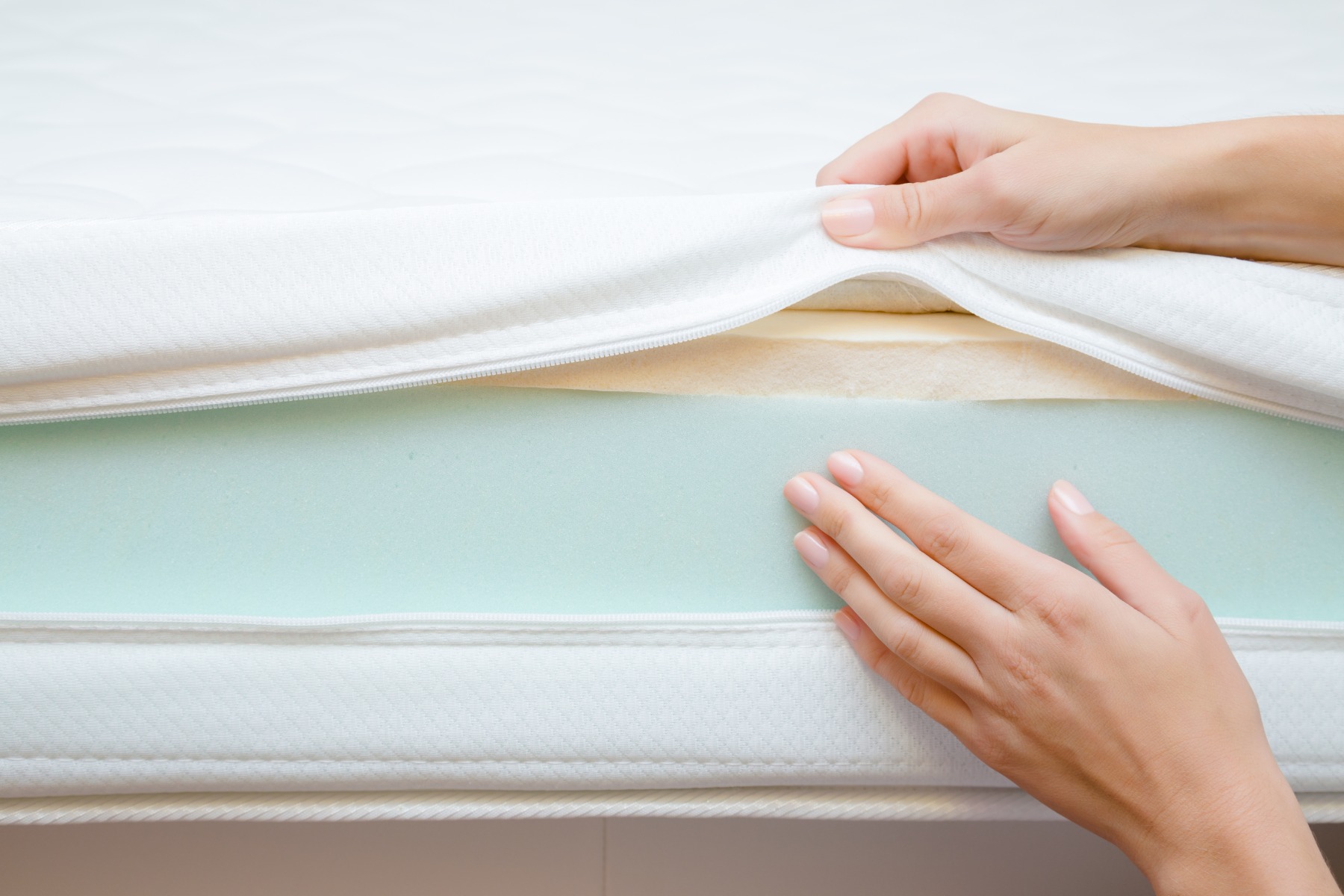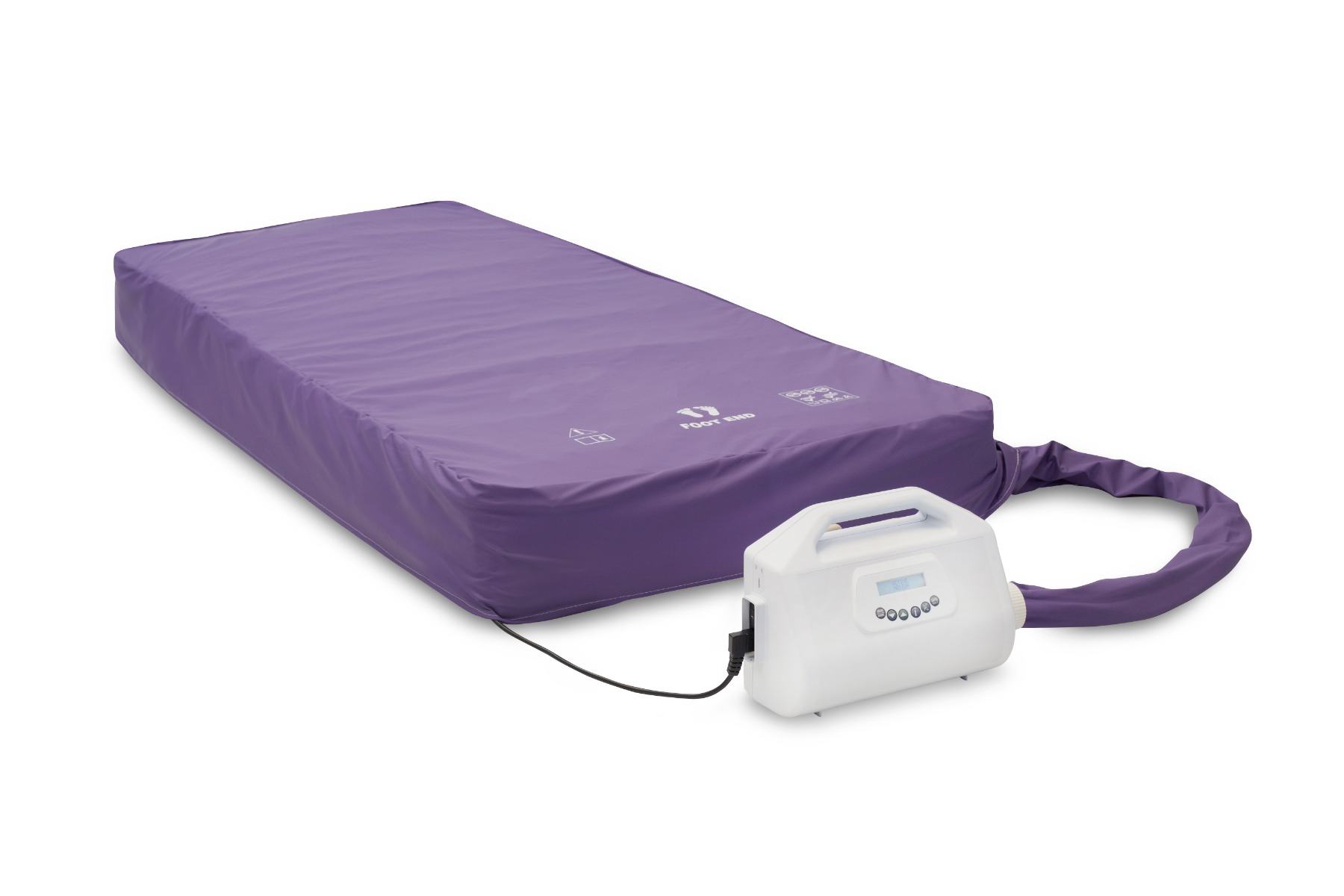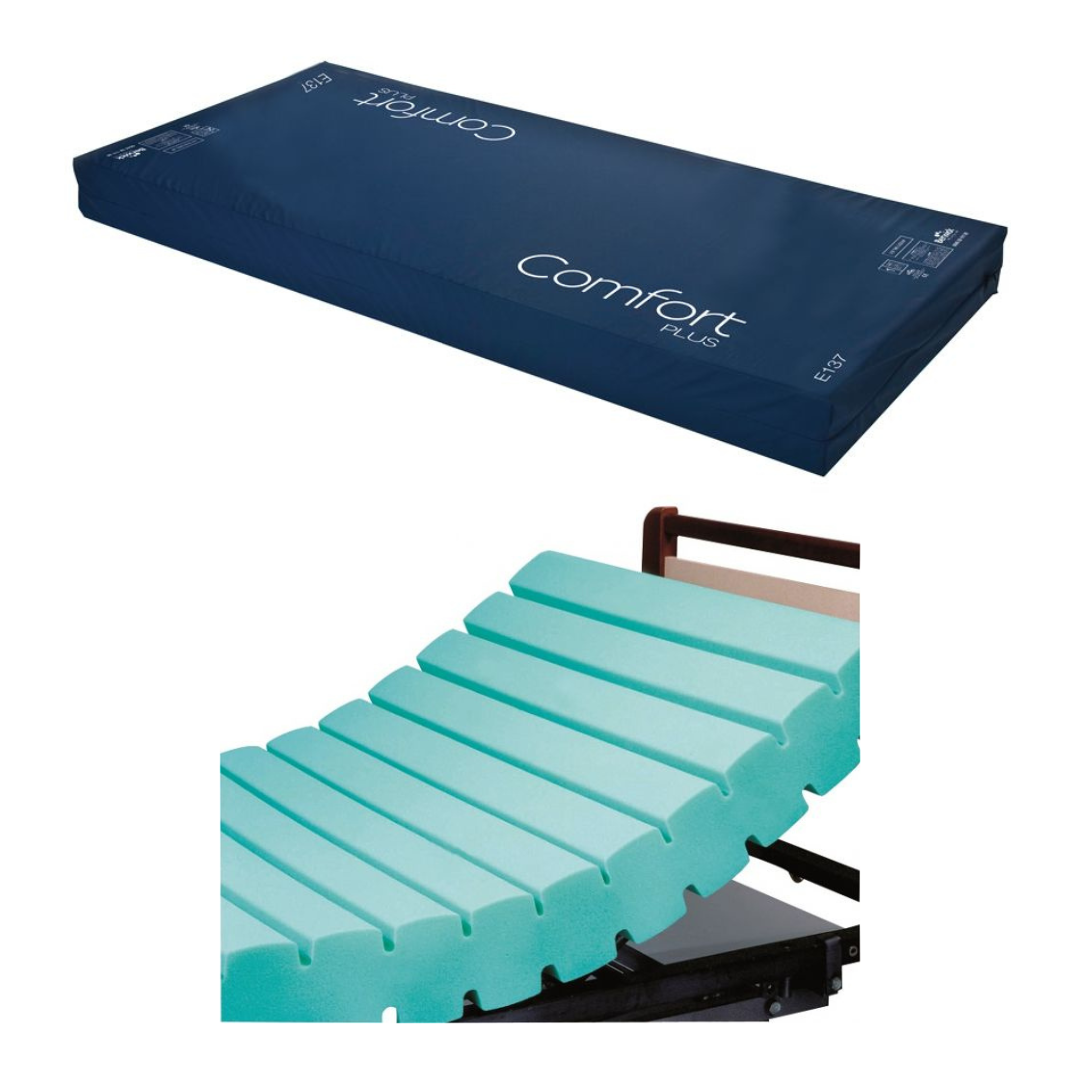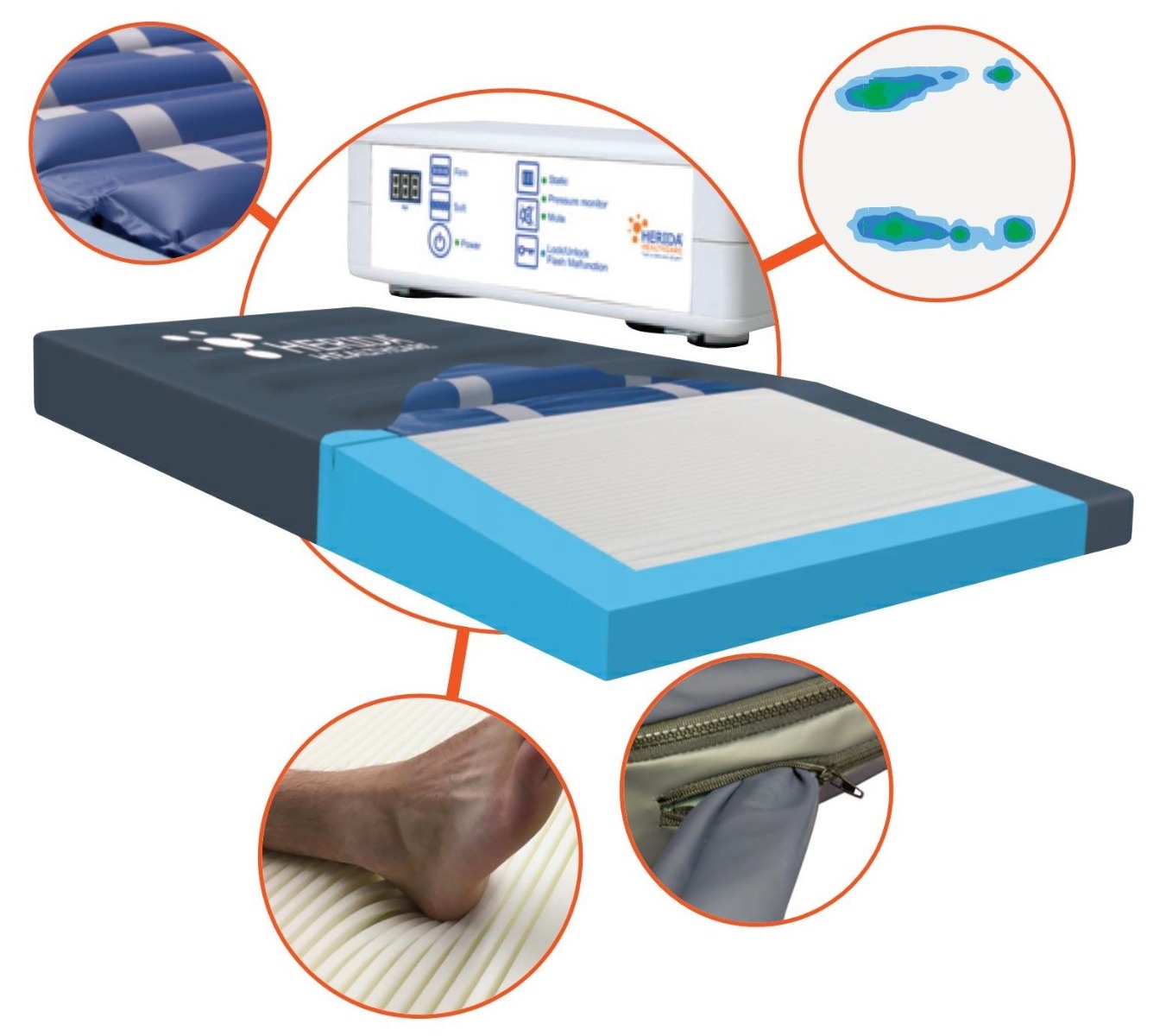Order before 4pm and select Express Courier Delivery for Next Working Day Delivery
Types of Pressure Relieving Mattresses
So, you have concluded you need a pressure mattress, however...
What Type Of Pressure Mattress Do You Require?
Like so many medical equipment items, there are further sub categories within the main category, potentialy leaving you with more headwork and research to do in time you just don't have!
No need for stress. Berwick has done all the research for you, to enable you to quickly identify the pressure relieving mattress from within our pressure care range that is best-suited for your patient.
Scoping
"It's what's inside that counts"

Initially, you will need to determine your patients medical health and care plan requirements to enable you to pair the individual intelligently with the most beneficial and holistic choice of mattress.
Types of Pressure Mattresses
The profiling bed mattress has and continues to evolve into many forms of pressure relieving mattresses.
There are a number of different pressure mattresses that have been manufactured specifically to relieve pain and reduce the risk of pressure ulcers in patients. As previously mentioned, the mattress that a patient will need will depend on their individual needs such as condition, weight and how much movement they are capable of.
We will explain the differences between the three types of pressure mattresses that are most commonly used in care homes and hospitals. These are air mattresses, foam mattresses and hybrid mattresses.
The Air Mattress
An air flow mattress can often, amongst others, be known as an alternating pressure mattress, dynamic mattress or dynamic air mattress.
Using air-flow through individual tubes to redistribute pressure inside the mattress, a pump inflates and deflates these tubes to support the user whilst also providing pressure relief. This is done by constantly alternating tubes (aka dynamic) that inflate and deflate to reduce the risk of pressure sore development at contact points.
The air flow can be adjusted to provide different amounts of pressure and it can also be set on a cycle over time to suit the individual user’s needs. By constantly changing the pressure in the air tubes, not only will an air mattress provide pressure relief, but it can also stimulate blood flow.
The alternating air pressure mattress, also referred to directly as a pressure sore mattress or pressure ulcer mattress, is an excellent piece of medical equipment for use in the management of bed sores.
The Foam Mattress
Foam mattesses can also be referred to as a static mattress or a reactive mattress, 'reactive' meaning they can mould and contour around the body.
The foam mattress is very popular in care homes and hospitals due to the excellent pressure relieving properties of foam. Foam easily spreads the users weight over the mattress, making it safe and comfortable for patients at risk of back pain, joint pain and pressure sores.
Many foam mattresses use castellated visco-elastic memory foam, the castellation (grooves in the foam as the second image above shows) allow for movement without compromising the pressure relief. Foam mattresses have improved over the years with the addition of memory foam layers, foam covers and different density of foams to suit an individual’s needs. However, due to the static nature of foam mattresses, the patient will need repositioning every few hours.
The Hybrid Mattress
The third type of pressure relieving mattress we look at in this article, is known as a hybrid or combination mattress which uses foam and air to relieve pressure for patients. This can often involve the alternating air tubes fitting inside a foam casing. Hybrid mattresses offer an advanced form of pressure relief for the most at risk patients.
They typically require a pump just like air mattresses, however ongoing innovation is bringing new forms of hybrid mattresses. These are being manufactured in a way that does not require any power, and instead responds to the person’s body movements.
For all your pressure care equipment requirements visit us online or contact us to speak with our fully trained and friendly team.




